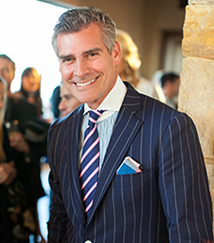“Conservatives have repeatedly hyped adult stem cell research,” wrote Christopher Mooney in his preposterous bestseller, The Republican War on Science. “The right’s faith based advocacy in this area has even been likened to ‘creation science.’”
Mooney, like virtually everyone on the left, endorsed embryonic stem cell research, the process of creating life to destroy it, sometimes called “therapeutic cloning.” For Mooney, the endorsement was just another fashionable way to bash the right. In the ten years since his book came out, embryonic stem cell research has produced little besides controversy.
As Kansans Betty and Gary Lortscher can attest, adult stem cell therapy has shown potential bordering on the miraculous. “We think Betty is demonstrating a potential procedure for reversing Alzheimer’s disease,” Gary said.

When Betty’s brother, Dave, died of early onset Alzheimer’s in 1997, Betty learned she was at risk for the disease. By 2009, her family noticed Betty was having trouble successfully making bread in a home-baking machine.
“Did she warm the water before she put the yeast in it? Did she leave an ingredient out?” Gary recalls. “About that time, she became unable to reconcile her bank statements.”
Medical practitioners at KU Medical Center began benchmarking Betty’s memory using a Mini-Mental State Examination, or MMSE. Her scores indicated dementia, and the downward trend meant her Alzheimer’s was becoming severe. By 2015, she had a bland look on her face and didn’t communicate.
A man of strong faith, Gary refused to accept what seemed to be inevitable. In January 2017, Gary drove Betty across America’s fruited plain to the Stem Cell Treatment Center in Newport, California.
As a first step, the doctors needed to collect and prepare stem cells. A doctor removed fat cells via a hip injection and centrifuged out Betty’s Mesencymal stem cells, using a proprietary process. The doctors then stalled a shunt in Betty’s brain. The shunt relieved Betty’s hydrocephalus, but it also would serve as an injection site for stem cell therapy.
“It’s kind of a goop that dilutes fat cells and includes the stem cells,” Gary says. The doctor injected the goop into Betty’s brain.
After her first treatment, Gary stopped at a convenience store on the long drive home to Kansas. There was still little Betty could do on her own. “I had to help her unfasten her seatbelt. I had to open her car door,” Gary says.
A few weeks later, April 2, Betty was still wheelchair-bound and unable to go to the front of the church to take communion at the Methodist Church in Bern, Kansas, where they live. Then the seemingly miraculous began to happen.
“Eleven days later, she started walking,” Gary says. That was the week of Easter 2017. On Easter Sunday, April 16, “Betty walked in front of me and walked to the Pastor to take communion,” Gary recalls. “She reached up and took a piece of bread and dipped it in the juice. And turned and left and started to her seat.”
In November, Betty’s MMSE scores notched higher still. “Statistically speaking, Betty would have been in an Alzheimer’s facility had she not received the stem cell injections,” Gary says.
Now she can respond to questions, walk to the front of her church to receive communion, and find and use a convenience store bathroom on her own. These are simple tasks, but Betty was in a wheelchair before she started getting adult stem cell treatments.
To this day Betty continues her stem cell therapy, returning to California every few months for injections. To be sure, there is no guarantee of a permanent reversal. But in the meantime, “hope” is blessing enough.


